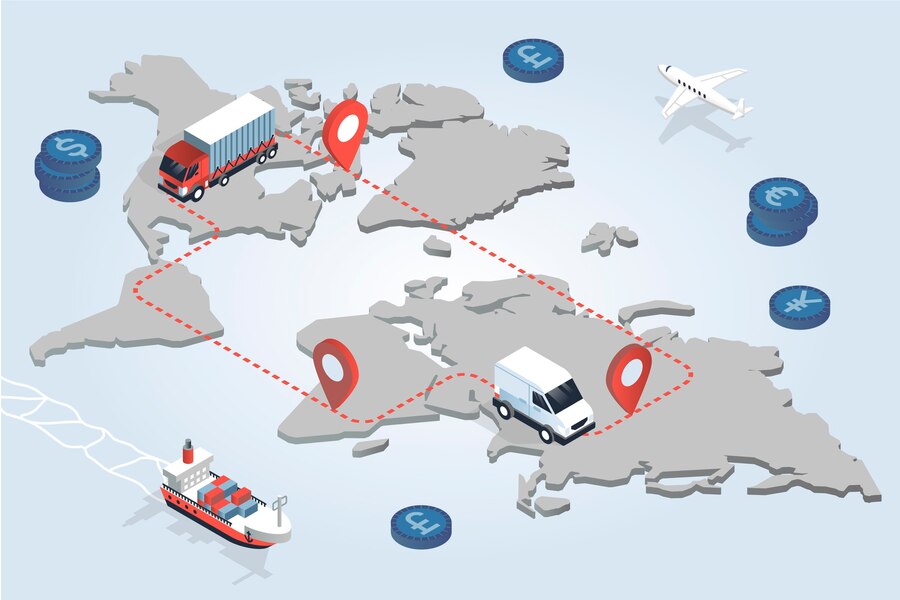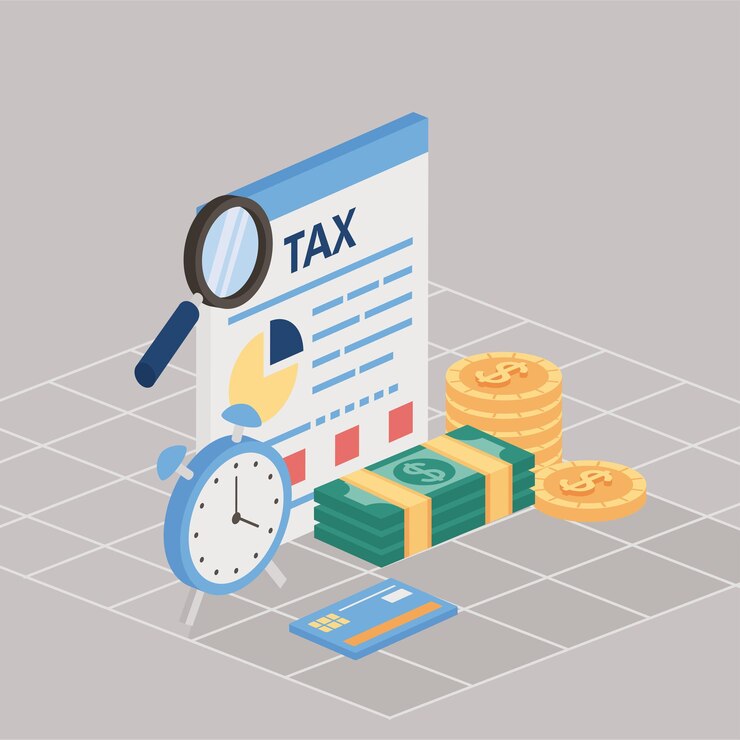Know All About Export Procedure Under GST
- 20 Sep 24
- 17 mins

Know All About Export Procedure Under GST
Key Takeaways
- Export of Goods Under GST: Considered as zero-rated supply, enabling export without tax or with tax refund options.
- Documentation for Exporting Goods: Requires a shipping bill, tax invoice, and export declaration for customs clearance.
- Zero-Rated Supply Benefits: Allows exporters to claim a full refund on GST paid on inputs for exported goods.
- Refund Procedure for Zero-Rated Supplies: It involves furnishing LUT, filing GST returns, applying for refunds, and processing by the GST authority.
- Export of Services Under GST: Requires recipient outside India, payment in foreign exchange, and compliance documentation.
Exporting goods and services from India has become more systematic and economical with the foundation of the Goods and Services Tax (GST). Since it went into effect in July 2017, the GST rule has made the tax system easier to understand and more business-friendly, especially for Indian exports.
This detailed guide aims to walk through the export procedure under GST, highlighting key steps, documentation, and refund processes.
What is Export of Goods?
Under GST, the export of goods is considered a 'zero-rated supply', implying that goods can be exported without payment of tax or upon payment of tax with a provision to claim a refund. The documentation required for exporting goods under GST includes the shipping bill, tax invoice, and trade declaration.
Export Documentation Under GST
For a seamless trade process under GST, exporters must prepare and maintain specific documents. These regulatory documents not only comply with GST regulations but also facilitate the smooth clearance of goods through customs. The essential documentation includes:
- The shipping bill is the primary document required for the export of goods, serving as an application for permission to trade. It contains details of the exported goods, their value, and the shipping route.
- Tax Invoice: A GST-compliant invoice that the exporter issues outlining the description, quantity, value, and GST charged (if applicable) of the goods.
- Export Declaration: A declaration by the exporter stating that the goods meet all the requirements of the country of import and detailing the specifications of the goods being exported.
Zero-Rated Supply in Goods Export
Under GST, the export of services and goods is deemed a zero-rated supply. This categorization means that goods can be exported without the payment of GST or with the payment of GST, with the option to claim a full refund on payment of taxes paid. By preventing domestic taxes from impeding trade, this clause aims to increase the competitiveness of Indian goods on international markets.
Procedure for Claiming Refund in Zero-Rated Supplies
One of the significant advantages of zero-rated supplies is the ability to claim a refund for the GST paid on inputs used to manufacture the exported goods. The process for claiming a refund is as follows:
- Furnish a Letter of Undertaking (LUT): Exporters are required to furnish an LUT in form GST RFD-11, allowing them to export goods without paying IGST. Alternatively, they can export goods under a bond and refund claim on IGST paid on exported goods.
- File GST Returns: Exporters must file monthly returns using Form GSTR-1, detailing their trade transactions. This GST return form should include information on the shipping bill and the tax invoice.
- Application for Refund: After filing returns, exporters can apply for a refund using form GST RFD-01A. Relevant paperwork, such as copies of the tax invoice and proof of trade, should go with this application.
- Processing of Refund: The GST authority will process the refund application after verifying the documents and ensuring compliance with GST regulations. The refund is usually credited to the exporter's bank account within a stipulated period.
Export of Services

The export of services under GST requires the fulfillment of specific criteria, such as the recipient's location outside India, payment in convertible foreign exchange, and the supplier and recipient not being merely establishments of a distinct person.
The procedure for exporting services includes obtaining an Export Ledger and filing monthly returns.
- Zero-Rated Supply in Service Export: Similar to the export of goods, the trade of services is also treated as a zero-rated supply under the GST framework. This means that service exporters can either export without paying GST or opt to pay GST and later claim a full refund. This provision ensures that Indian services remain competitive on a global scale by not being subject to domestic taxes.
- Documentation Required for Exporting Services: The documentation process for exporting services under GST is critical for ensuring compliance and facilitating smooth transactions. The key documents involved in the export of services include:
- Tax Invoice: A comprehensive invoice detailing the service provided, the value of the service, and the GST charged, if applicable. It should also include the address of the recipient and the place of supply to establish that the service is exported.
- Letter of Undertaking (LUT): Exporters of services are required to submit a Letter of Undertaking (GST RFD-11) to the GST authorities, declaring their intent to trade services without the payment of IGST.
- Foreign Inward Remittance Certificate (FIRC): For services exported against foreign currency, the FIRC serves as proof of receipt of payment from outside India, which is crucial for claiming GST refunds.
Procedure for Claiming GST Refund on Exported Services
Exporters of services can claim a refund of the GST paid on inputs used to provide the exported service. The refund procedure entails:
- Submission of LUT: Before exporting services, the exporter must submit an LUT, enabling them to export without paying IGST.
- Filing of Returns: Exporters need to file their monthly or quarterly GST returns, detailing all the exported services, using form GSTR-1. This form should include information regarding the invoice value and the foreign exchange earned.
- Application for Refund: The exporter can apply for a refund of the input tax credit using form GST RFD-01, citing the trade of services as the reason for the refund. Tax invoices and the FIRC are just two examples of the pertinent documents that must support this application.
- Refund Processing: Upon submission, the GST department will verify the refund application and documents. Once approved, the refund amount will be credited to the exporter's bank account.
Key Considerations for Service Exporters
- It's crucial to maintain accurate and comprehensive documentation for every service exported.
- Exporters should ensure timely submission of LUT and regular filing of GST returns to avoid any delays in the refund process.
- Knowing the place of supply and recipient's location is vital for GST compliance in service exports.
Exports under GST
Exports under GST enjoy the benefit of zero rating, allowing exporters to refund the tax paid on inputs used in manufacturing goods or providing services exported. This segment covers the extensive regulations governing exports under GST.
Export Procedure Under GST

Exporting under GST is considered a zero-rated supply, allowing exporters to either export goods and services without paying GST or claim a refund of the tax paid on inputs. This favorable provision ensures that trades are competitive in the international market. Here's a step-by-step guide to the export procedures under GST:
Step 1: Obtain GST Registration
The first step for exporters is to obtain GST registration. It is mandatory for businesses with a turnover above the specified threshold and for those involved in the trade of goods and services.
Step 2: Classify Goods or Services
Correctly classifying goods or services under the Harmonized System of Nomenclature (HSN) or Service Accounting Code (SAC) is crucial for compliance and availing benefits under the GST regime.
Step 3: Furnish a Letter of Undertaking (LUT) or Bond
Exporters are required to furnish a Letter of Undertaking (LUT) or a bond, promising to abide by all GST rules and simplified procedures. This allows them to export goods or services without paying IGST.
Step 4: Prepare and File Shipping Bills
For the export of goods, preparing and filing shipping bills are mandatory. The shipping bill acts as the primary document for customs clearance and GST compliance.
Step 5: Claim Refund of IGST Paid on Exports
Exporters can claim a refund of the IGST paid on exported goods and services. The process involves filing the relevant forms and providing necessary documentation to support the claim.
Step 6: Regular Compliance and Record-Keeping
Exporters must comply with regular GST filings, including GSTR-1 and GSTR-3B, and maintain detailed records of trades to ensure transparency and ease of refund claims.
Refund of IGST Paid on Exports
One of the most significant benefits for exporters under GST is the ability to claim a refund of the IGST paid on exported goods and services. The process is as follows:
- Filing of Export Documents: Ensure that all trade-related documents, including shipping bills and tax invoices, are accurately filed and linked to the GST returns.
- Application for Refund: Submit an application for a refund in form RFD-01A through the GST portal, attaching the necessary documents.
- Refund Processing: The GST authorities will process the refund application after verifying the documents and compliance with the GST rules.
Brief on Refund of IGST Paid on Exports
Exports under GST are considered zero-rated supplies, allowing exporters to claim a refund on the IGST paid on goods and services exported. The refund mechanism ensures that trades are not subject to domestic taxes, enhancing their competitiveness globally.
Steps for Claiming Refund of IGST Paid on Exports
- Export under LUT or Bond: Export without payment of IGST under an LUT or bond.
- File GST Returns: Accurately file monthly returns using GSTR-1, detailing the exports made.
- Apply for Refund: Submit an application for a refund using form RFD-01A on the GST portal, including details of the IGST paid on exported goods or services.
- Documentation: Attach necessary documents, including shipping bills and tax invoices, with the refund application.
- Refund Processing: The GST department will process the application and issue the refund directly to the bank account of the exporter.
When to File Form RFD-01 / RFD-01A
Form RFD-01 or RFD-01A should be filed to claim a refund of the IGST paid on exports. The application must be submitted after the export of goods or services and once the relevant export details are furnished in GSTR-1 and the shipping bill.
What are a letter of undertaking (LUT) and bonds?
A Letter of Undertaking (LUT) is a document that allows exporters to export goods or services without paying IGST. A bond, on the other hand, requires the exporter to furnish a security, guaranteeing the obligations under GST will be fulfilled. Both are used to avail themselves of the benefit of exporting without the immediate payment of taxes.
Who Can Use a Letter of Undertaking (LUT) and Bonds for Exports?
Registered exporters with a good compliance record are eligible to use an LUT. Exporters who cannot meet the LUT criteria may opt for bonds. The eligibility to use an LUT or bond is determined based on the exporter's GST compliance and financial health.
What Happens if Goods or Services Are Not Exported?
If the goods or services declared for export under LUT or bond are not exported, the exporter becomes liable to pay the IGST, along with any applicable interest or penalties. This ensures compliance with GST regulations and the integrity of export declarations.

How to File Letter of Undertaking (LUT) and Bonds for Exports
- Application Submission: Submit the LUT application in form GST RFD-11 online through the GST portal.
- Documentation: Attach the required documents, including bank guarantees if required for bonds.
- Approval: Once approved, the LUT or bonds for trade are valid for the financial year in which they are accepted.
Format of LUT and Bonds in RFD-11
The format for LUTs and bonds is specified in GST RFD-11. The form requires basic information about the exporter, the declaration for export without payment of IGST, and any additional conditions specified by the GST department.
A Letter of Undertaking (LUT) is submitted in the prescribed format under GST RFD-11, which includes:
- Exporter’s Details: Name, address, and GSTIN of the exporter.
- Declaration: A declaration stating that the exporter will fulfill all requirements prescribed under GST for the export of goods or services without the payment of IGST.
- Validity Period: The LUT is typically valid for the financial year in which it is submitted.
- Bank Guarantee: While LUTs generally do not require a bank guarantee, exporters must declare their eligibility and compliance with GST regulations.
- Undertaking: The exporter undertakes to pay the tax along with interest, as applicable, in case of failure to trade the goods or services within the stipulated time frame.
Format of Bonds in RFD-11
Bonds are similar to LUTs but require the submission of a security or bank guarantee. The format includes:
- Exporter’s Details: Including the name, address, and GSTIN of the exporter.
- Bond Details: The bond amount, which is based on the estimated tax liability on the exported goods or services,.
- Security: details of the security or bank guarantee provided along with the bond, usually a percentage of the bond amount.
- Declaration and Undertaking: Similar to the LUT, a declaration that the exporter complies with all GST regulations for trade and an undertaking to pay the tax with interest if the conditions are not met.
- Validity: Bonds are also valid for a financial year and must be renewed accordingly.
Key Considerations
- Submission: Both LUT and bonds in RFD-11 are submitted electronically on the GST portal.
- Eligibility: Exporters with a good compliance history are eligible to submit LUTs, while others may need to opt for bonds with a bank guarantee.
- Compliance: It's essential for exporters to maintain compliance with the trade conditions under GST to avoid liabilities.
Various Measures Taken by India for Promotion of Exports
The Indian government has implemented several measures to promote exports, including:

- Simplification of the export registration process.
- Introduction of e-commerce platforms for trade transactions.
- Providing incentives under various trade promotion schemes.
- Streamlining the refund process for taxes paid on inputs for exported goods and services.
Current Taxation System on Imports and Exports
Under GST, imports into India are treated as inter-state supplies and attract Integrated Goods and Services Tax (IGST) along with applicable customs duties. The IGST paid on imports can be availed of as an input tax credit (ITC) by the importer, which can be used to offset their GST liabilities on subsequent supplies of goods or services.
This mechanism ensures that the tax paid on imports contributes to the seamless flow of input tax credit across the supply chain.
Key Points on Import Taxation:
- Customs Duty: Customs duty remains applicable on imports as per the Customs Tariff Act. GST is levied in addition to the customs duty.
- IGST on Imports: IGST is levied on the value of imported goods, which includes the assessable value plus customs duty and any other applicable taxes.
- Input Tax Credit: Importers can claim the IGST paid on imports as input tax credit, subject to compliance with the conditions prescribed under the GST law.
Taxation on Exports
Exports from India are treated as zero-rated supplies under GST. This means that goods or services exported from India are not subject to GST, allowing exporters to enhance their competitiveness in international markets. Exporters have two options under the GST regime for exporting goods or services:
- Export Without Payment of IGST: Exporters can export goods or services under a Letter of Undertaking (LUT) without payment of IGST. They are eligible to claim a refund of input tax credit on inputs used in the manufacture of exported goods or supply of services.
- Export With Payment of IGST: Alternatively, exporters can choose to pay IGST at the time of trade and claim a refund of the IGST paid. This option is beneficial in scenarios where input tax credit accumulation is high.
Key Points on Export Taxation
- Zero-Rated Supply: Exports are considered zero-rated, meaning exporters can conduct business without the burden of GST.
- Refund Mechanism: A robust refund mechanism for input tax credit or IGST paid on trades ensures that exporters do not face liquidity issues.
- Documentation and Compliance: Exporters must comply with the documentation and procedural requirements under GST to avail themselves of the benefits of zero-rated supplies.
Conclusion
The Goods and Services Tax (GST) regime, effective July 2017, has significantly streamlined the trade process in India, making it more systematic and economical. By categorizing exports of goods and services as zero-rated supplies, it allows exporters to conduct business without the burden of tax, thereby enhancing the competitiveness of Indian trade on the global stage.
The provision for claiming a refund on the IGST paid on inputs used in manufacturing exported goods or for services rendered further encourages exporters by reducing their operational costs. Compliance with documentation and prompt payment of returns are essential factors in being able to seize the available opportunities under the GST system for trade.
With changes in the global market, the GST regime's flexibility and cooperative policy offer a great chance for Indian trade to be sustainable and highly competitive.
💡Secure your GST compliance with Pice, a business payments & credit line company serving Indian businesses. Download your PICE Application now for hassle-free GST Payments!
 By
By 

















